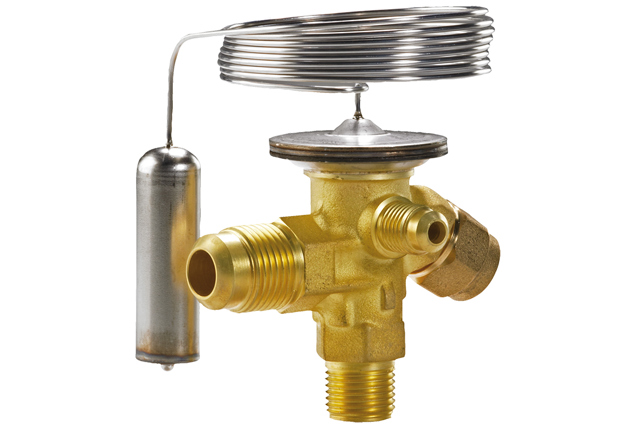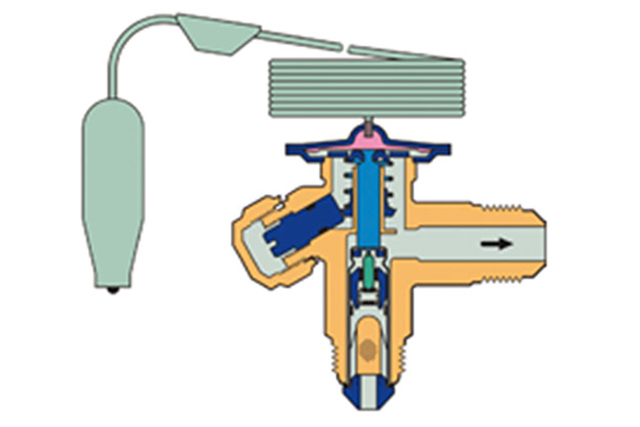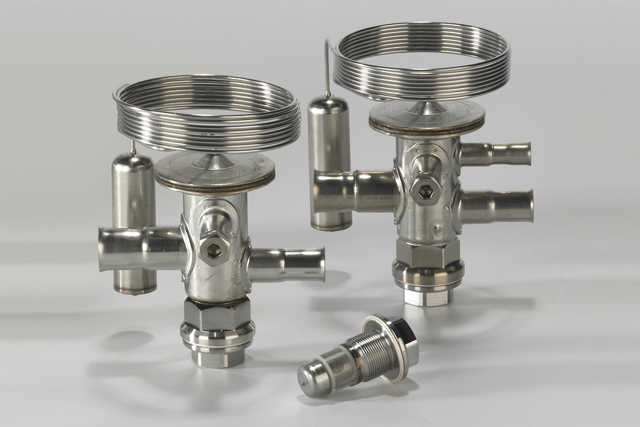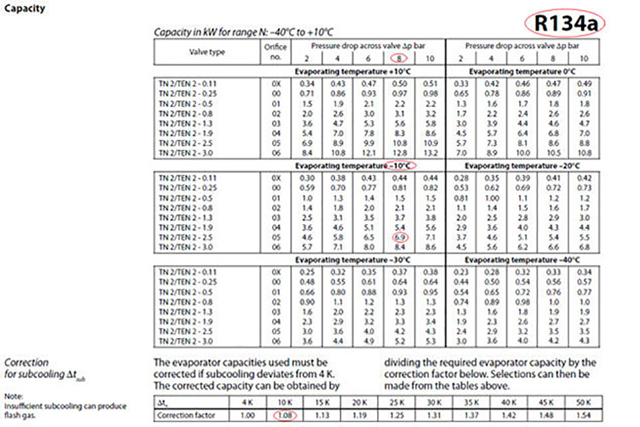Thermostatic expansion valves are standard use in commercial refrigeration plant construction, and are therefore widely-used in compression refrigeration systems with dry expansion. They are used for optimum evaporator admission flow, and with varying load conditions. Some points in particular must be observed with their dimensioning, which will now be more precisely illuminated in this article.
Function
Thermostatic expansion valves ensure that sufficient superheat is always guaranteed at the evaporator outlet, so that the compressor constantly aspires refrigerant vapor without being damaged. The superheat is the difference between the measured temperature value on the evaporator output and the saturated vapor temperature of the pressure read out from the manometer. At the same time the entire exchange surface of the evaporator is also used. This means it needs no electrical connection or higher externally supplied pressure to function. The thermostatic expansion valve consists of a thermostatic element with sensor, a sensor charge, a diaphragm, a tappet connection between the diaphragm and valve seat and a housing. Liquid refrigerant from the liquid line – coming from the receiver – is present at the expansion valve. This liquid is now controlled by the expansion valve and injected via the injection line and (if required) a refrigerant distributor into the evaporator. The sensor is attached to the evaporator output and care must be taken to ensure the evaporation pressure under the diaphragm in the expansion valve is always present.




